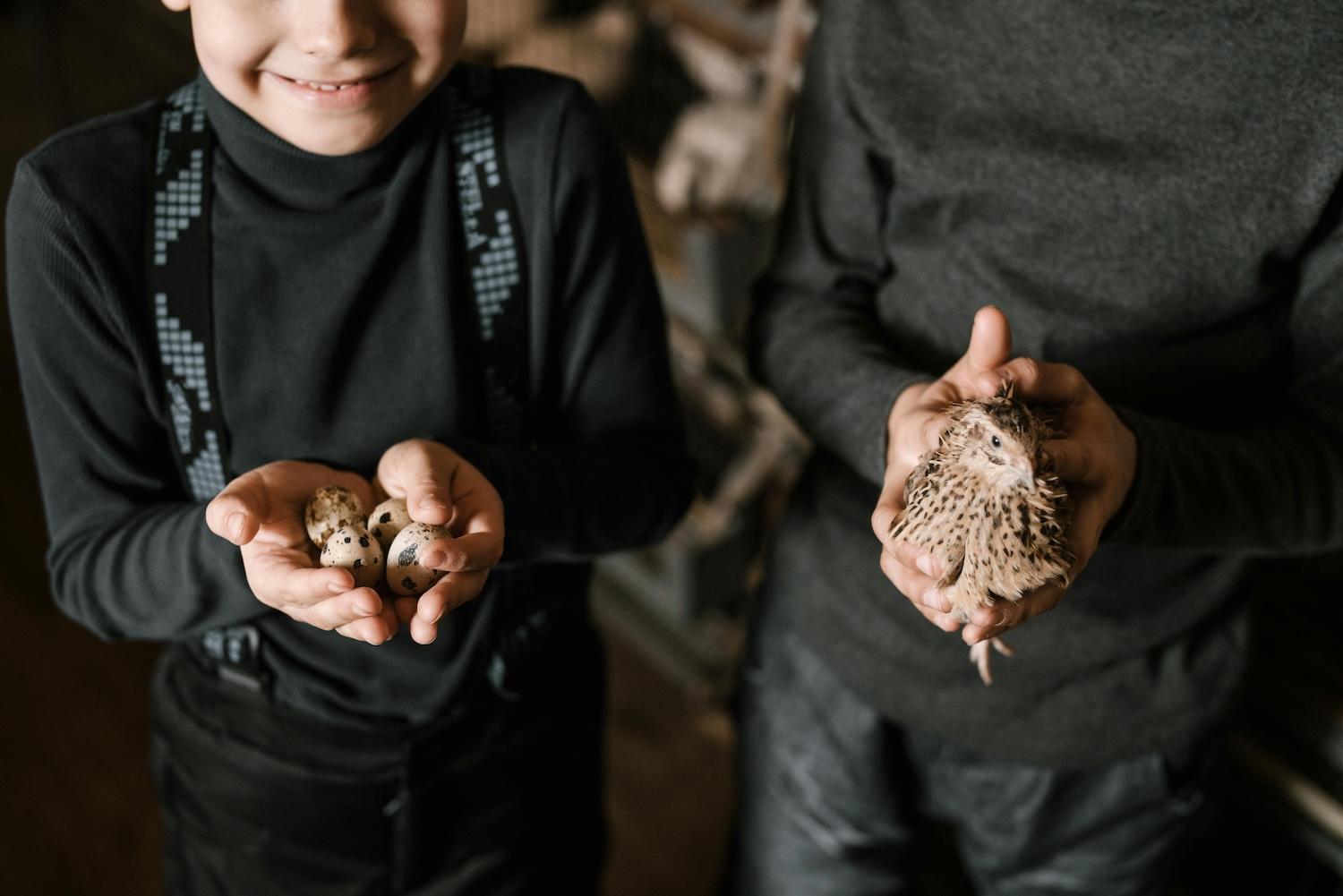Texas-focused, backyard-scale guidance for first-time keepers.
🌤️ Why Quail Appeal to Texans
Across Texas, more backyard growers are discovering that quail can be the perfect “starter bird.” They’re small, quiet, and productive—an ideal match for anyone who wants fresh eggs or a taste of self-sufficiency without needing acres of space. Unlike chickens, quail are often allowed in cities with poultry restrictions, and they mature quickly (Poultry Extension, 2023). Thoughtful setup for heat and airflow is essential in Texas (Texas A&M AgriLife Extension Service, 2023).
🐣 Choosing the Right Breed
Coturnix (Japanese) quail are the best choice for beginners: hardy, easy to manage, and consistent layers that mature fast (Poultry Extension, 2023). Northern Bobwhite are Texas natives but are regulated; breeding or releasing them may require licensing (Texas Parks & Wildlife Department, 2023). Button (Chinese painted) quail are ornamental and not ideal for eggs or meat.
When sourcing chicks or hatching eggs, buy from clean, reputable breeders and quarantine new birds before adding to your flock (Mississippi State University Extension, 2023).
🏠 Space, Housing & Neighborhood Considerations
- Space: Plan ~1 sq ft per bird to reduce stress and pecking (Poultry Extension, 2023).
- Predator-proofing: Use hardware cloth, secure latches, and a solid perimeter. Quail can startle and “flush,” so avoid tall ceilings or add head protection.
- Ventilation & shade: Prioritize cross-breeze, shade cloth, and light-colored roofing to avoid heat buildup (Texas A&M AgriLife Extension Service, 2023).
- Zoning: Many Texas municipalities treat quail differently than chickens—always check local ordinances before you start (Texas Parks & Wildlife Department, 2023).
🌾 Feed, Water & Daily Care
- Chicks (0–6 weeks): 24–28% protein game bird starter.
- Adults: 18–22% protein grower/layer feed; offer supplemental calcium (e.g., crushed oyster shell) to support strong shells (Mississippi State University Extension, 2023).
- Water: Keep water shaded and clean; rinse daily in summer to prevent algae. Consistent access to cool water is critical in heat (Texas A&M AgriLife Extension Service, 2023).
🥚 Egg Production & Handling
Female Coturnix typically begin laying at 6–8 weeks and can produce ~200–300 eggs per year under good management (Poultry Extension, 2023). Collect eggs at least once daily—twice during peak heat—and refrigerate promptly. Store point-down. Wash only if visibly soiled, and if washing is necessary, use water warmer than the egg to avoid pulling bacteria inward (Mississippi State University Extension, 2023).
👉 Also read: How to Store, Wash, and Handle Quail Eggs Safely
☀️ Coping with Texas Weather
- Heat: Prioritize shade, airflow, and low-radiant roofing. Use frozen water bottles, ceramic tiles, or shallow “cool trays” so birds can dissipate heat through their feet (Texas A&M AgriLife Extension Service, 2023).
- Cold snaps: Keep pens dry with windbreaks while preserving ventilation. Avoid sealing enclosures completely; damp, still air increases respiratory risk (Poultry Extension, 2023).
🧾 Regulations, Permits & Ethical Basics
Coturnix quail are considered domestic and generally do not require wildlife permits in Texas. Bobwhite are regulated; breeding or releasing them may require a game bird breeder’s license (Texas Parks & Wildlife Department, 2023). Confirm your city’s limits on animal numbers, setbacks, and waste management. Quarantine new birds for at least two weeks and practice humane handling at all times (Mississippi State University Extension, 2023).
🧺 Getting Started Checklist
- Source healthy birds/eggs from reputable Texas breeders; quarantine new arrivals.
- Set up a predator-proof, shaded pen with strong airflow and easy-to-clean flooring.
- Brooder for chicks: start at ~95°F in week 1, then lower ~5°F each week (Poultry Extension, 2023).
- Buy game bird starter (24–28% protein), adult feed (18–22%), and oyster shell.
- Keep a small emergency kit: electrolytes for heat stress, extra waterers, spare shade cloth.
⚠️ Common Mistakes to Avoid
- Overcrowding (stress, pecking, reduced lay).
- Insufficient ventilation or full sun exposure in summer.
- Using standard chicken feed for Coturnix (often too low in protein).
- Letting pens stay damp or dirty (odor, pests, disease).
- Skipping ordinance/HOA checks before you start.
❓ FAQs
Can I keep quail if my city bans chickens?
Often yes. Some ordinances classify quail differently. Always verify with your city’s animal services department (Texas Parks & Wildlife Department, 2023).
Do quail smell or attract pests?
Clean, dry pens with good airflow and pest-proof feeders stay neutral-odor. Spilled feed is the main pest attractor—use tight feeders and spot-clean daily (Mississippi State University Extension, 2023).
Do I need a permit in Texas to raise quail?
Not for Coturnix. Bobwhite are native and regulated; breeding/releasing may require a game bird breeder’s license (Texas Parks & Wildlife Department, 2023).
How long do quail live and when do they lay best?
Most live 2–3 years, with peak egg production in the first year (Poultry Extension, 2023).
Can I hatch my own quail eggs at home?
Yes. Coturnix incubate in about 17 days at ~99.5°F with appropriate humidity. A stable incubator and good sanitation are key (Poultry Extension, 2023).
🔗 Related Reading
- Are Quail Eggs Healthier Than Chicken Eggs?
- How to Store, Wash, and Handle Quail Eggs Safely
- DIY Pet Treats with Quail Eggs
📚 References
- Texas A&M AgriLife Extension Service (2023). Quail Production, Farming & Industry.
- Poultry Extension (2023). Raising Japanese Quail in Small and Backyard Flocks.
- Mississippi State University Extension (2023). Quail Feeding Programs.
- Texas Parks & Wildlife Department (2023). Game Bird Breeder’s License Information.
- BackyardQuail.com (2024). Quail 101: A Beginner’s Guide to Raising Backyard Quail.





